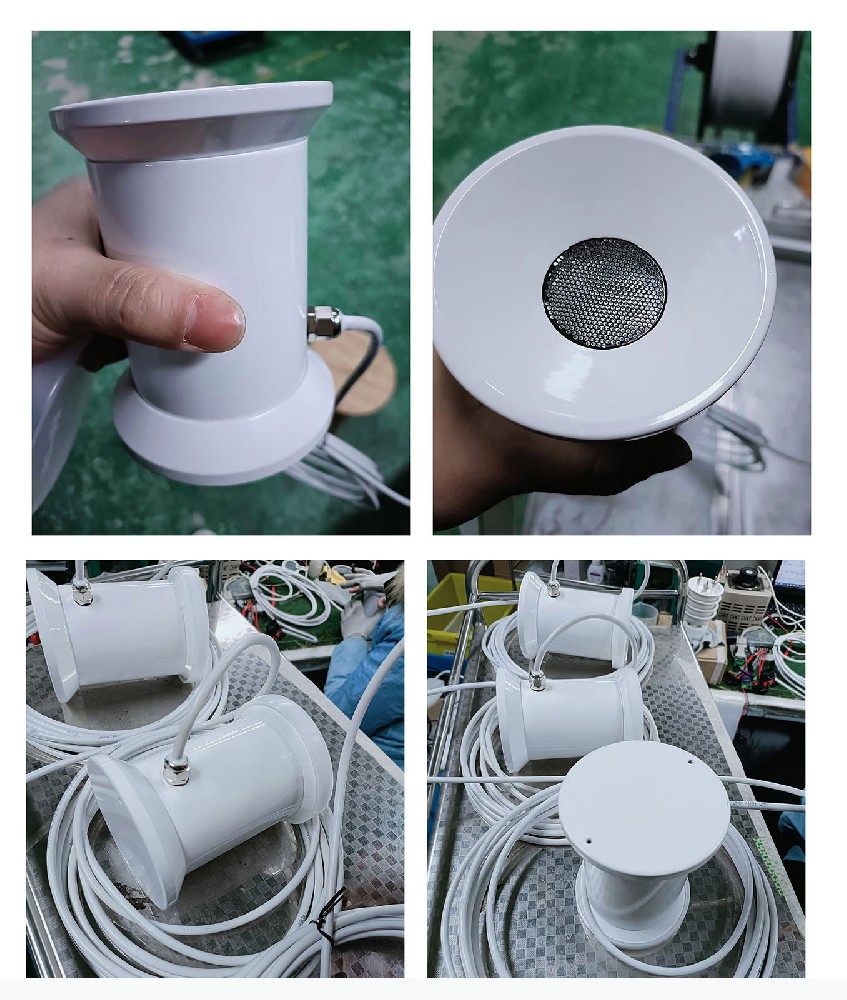

— Products —
 Consumer hotline +8618073152920
Consumer hotline +8618073152920 WhatsApp:+8615367865107
Address:Room 102, District D, Houhu Industrial Park, Yuelu District, Changsha City, Hunan Province, China
All products
Automated snow gauge is a meteorological instrument that is a device used to measure snowfall in a specific area. It is designed to automatically measure and record the depth of snowfall. It is commonly used in weather stations and monitoring networks to collect accurate and reliable data on snow accumulation and melting, which is important for a variety of applications including water resource management, avalanche forecasting, and climate research.
Tel/WhatsApp:+8615367865107
Email:Arvin@niubol.com +Nearly 100 partner companies in more than 68 countries. We are committed to providing high-quality, practical products to meet your needs and help you solve problems. Our products comply with international standards and are certified with ISO, CE and RoHS.Product Details
An automatic snow gauge is a meteorological instrument that is a device used to measure snowfall in a specific area. It is designed to automatically measure and record the depth of snowfall. It is commonly used in weather stations and monitoring networks to collect accurate and reliable data on snow accumulation and melting, which is important for a variety of applications including water resource management, avalanche forecasting, and climate research.
There are different types of automatic snow gauges, with a focus on ultrasonic snow depth sensors . Ultrasonic Snow Depth Sensors : Ultrasonic snow depth sensors use ultrasonic technology to measure the distance between the gauge and the snow surface. By measuring the distance before and after a snowfall event, the gauge can calculate the amount of snowfall.
Snow deep sensor is an intelligent and sensitive snow -reducing monitoring instrument and equipment that can accurately identify and interference. It can be widely used in measuring meteorology, airports, ports, laboratories, industries, agriculture and transportation.

Snow sensor parameters
| Power | DC 12V / City electricity |
| Communication method | RS485 |
| Power consumption | Normal temperature :180mW; Low temperature (<5'C) turn on heating : 3W |
| Baud rate | 9600bps |
| Measuring range | 0-1000mm |
| Working environment | -40℃-50℃; ≤100%RH |
| Storage environment | -40℃-65℃; ≤100%RH |
| Measurement precision | ±0.1%FS |
| Length of cable | Standard 5 meters |
Snow sensors are commonly used in meteorology, climate research, and environmental monitoring to track snowfall patterns and provide valuable data for various applications, including weather forecasting, avalanche prediction, and water resource management.
Ultrasonic snow sensor is a kind of common snow monitoring equipment, its working principle is based on the propagation and reflection of ultrasonic wave. Specifically, the ultrasonic snow sensor sends out a beam of high-frequency sound waves that travel through the air to the ground and are then reflected back.
The sensor contains a receiver that receives the reflected sound waves and determines the propagation time of the sound waves by calculating the time difference. Because sound waves travel at different speeds between air and snow, sensors can calculate the depth of the snow layer based on the time difference. Therefore, ultrasonic snow sensors can provide accurate snow depth data.
The ultrasonic snow sensor can also calculate the amount of snow based on its density, which is related to the speed at which sound waves travel through it. Therefore, the sensor can provide both snow depth and snow amount data, which can be used to monitor snowfall, snow accumulation and snowmelt.

1. Sensing mechanism: The ultrasonic snow depth sensor is an intelligent snow depth sensor that uses ultrasonic remote testing technology to monitor the snow amount and realise automatic and continuous monitoring of the snow depth; it calculates the snow depth through 50kHz ultrasonic measurement of the time difference between the transmit and return signals.
2. Data collection: The sensing mechanism sends data to a microcontroller or data logger within the instrument. The data logger records snow depth at regular intervals, ranging from minutes to hours, depending on the design of the gauge and the needs of the monitoring station.
3. Wireless communication: Many automatic snow gauges are capable of transmitting data wirelessly to a central monitoring station. This can be done via WiFi communications, Lorawan or cellular networks.
4. Power: Automated snow gauges require a power source, which can be solar powered, battery powered, or connected to a nearby power source. Some gauges are designed to operate on a combination of these power sources.
5. Environmental Adaptability: These gauges can typically withstand harsh weather conditions, including sub-zero temperatures, high humidity, and high winds.
6. data analysis: data collected is analysed to determine snowfall rates, storm duration and overall snowpack dynamics. This information is critical for water managers as it helps predict flows and manage water resources efficiently.
Automated snow gauges significantly improve the accuracy and efficiency of snowfall measurements compared to traditional manual methods. They can operate continuously, providing real-time data in remote areas, and are an important tool for studying and managing snow-covered areas of the world.
Automated snow gauges are commonly used in weather monitoring systems, avalanche detection, transport management and other snow-related activities. They provide valuable data for decision-making related to snow removal, road safety and other snow-related activities. Automation of these gauges reduces the need for manual measurements, saves time, and improves the accuracy of the data collected.
Prev:Snow sensor
Sensors & Weather Stations Catalog
Agriculture Sensors and Weather Stations Catalog-NiuBoL.pdf
Weather Stations Catalog-NiuBoL.pdf
Related recommendations
 Multi-Depth Soil Sensor RS485
Multi-Depth Soil Sensor RS485 TDR Soil Moisture Sensor
TDR Soil Moisture Sensor Pyranometer Solar Radiation Sensors
Pyranometer Solar Radiation Sensors Soil ph sensor
Soil ph sensor Tipping Bucket Rain Gauge
Tipping Bucket Rain Gauge Air Temperature and Humidity Sensor
Air Temperature and Humidity Sensor
Screenshot, WhatsApp to identify the QR code
WhatsApp number:+8615367865107
(Click on WhatsApp to copy and add friends)
